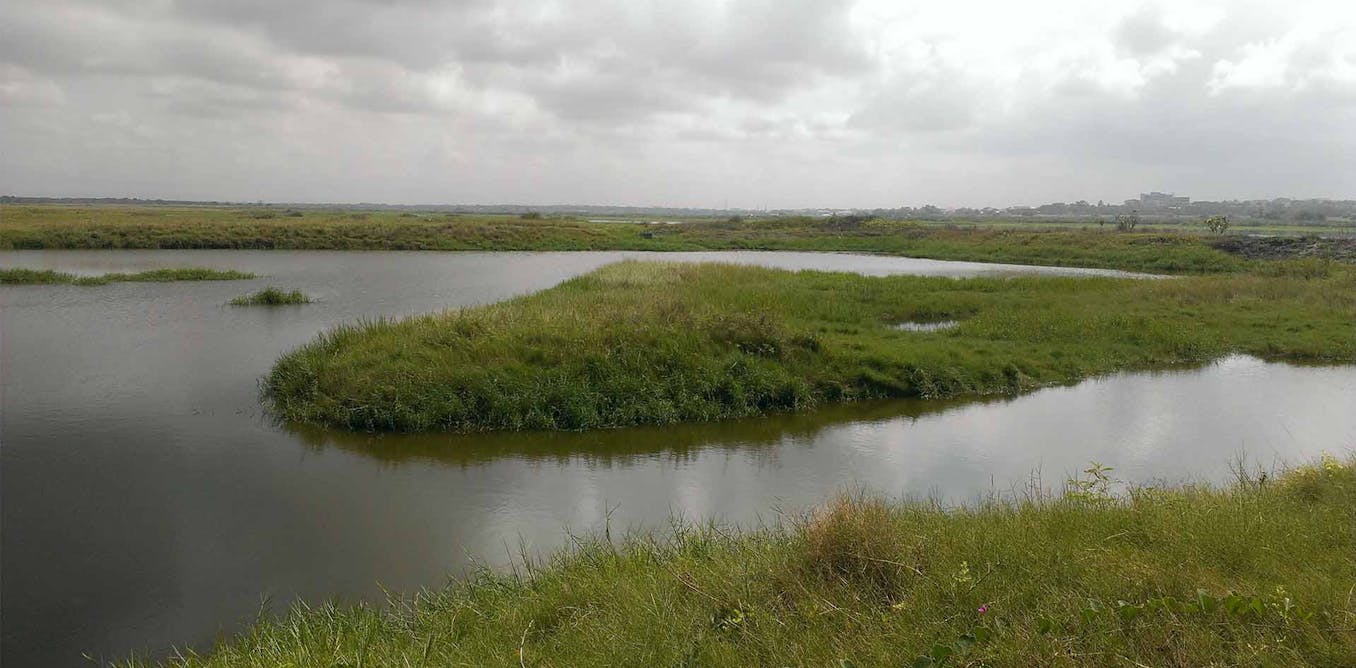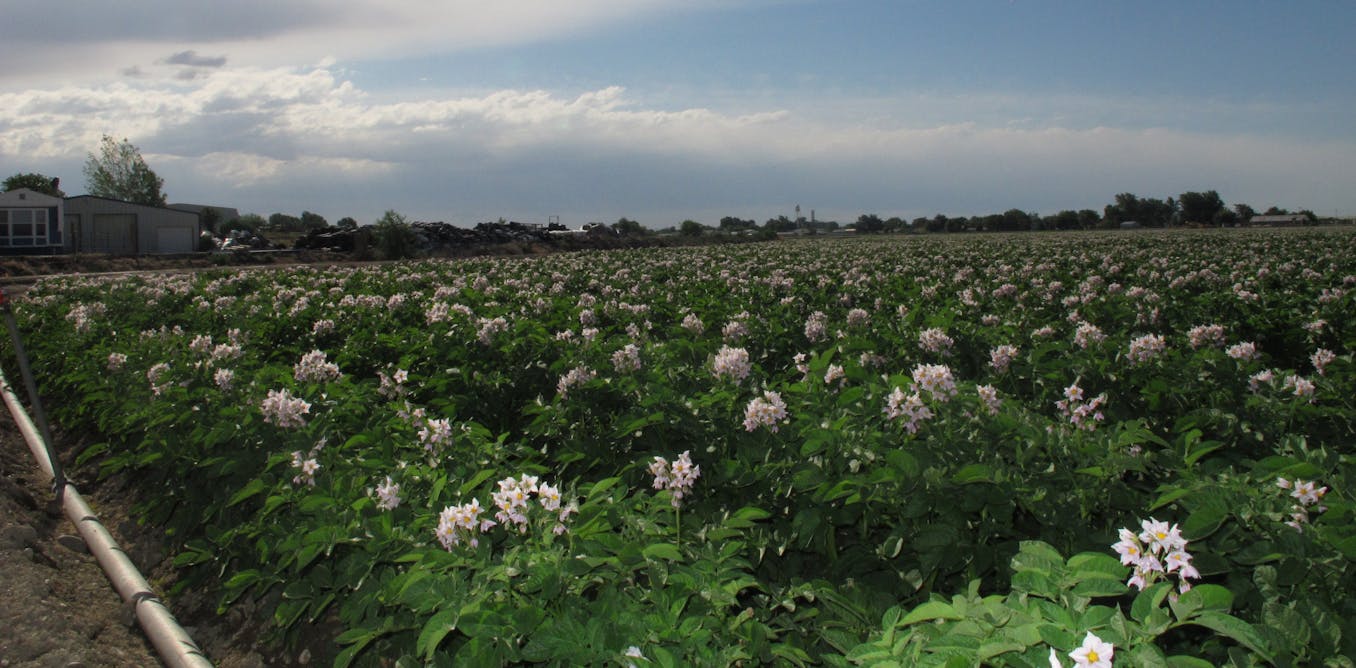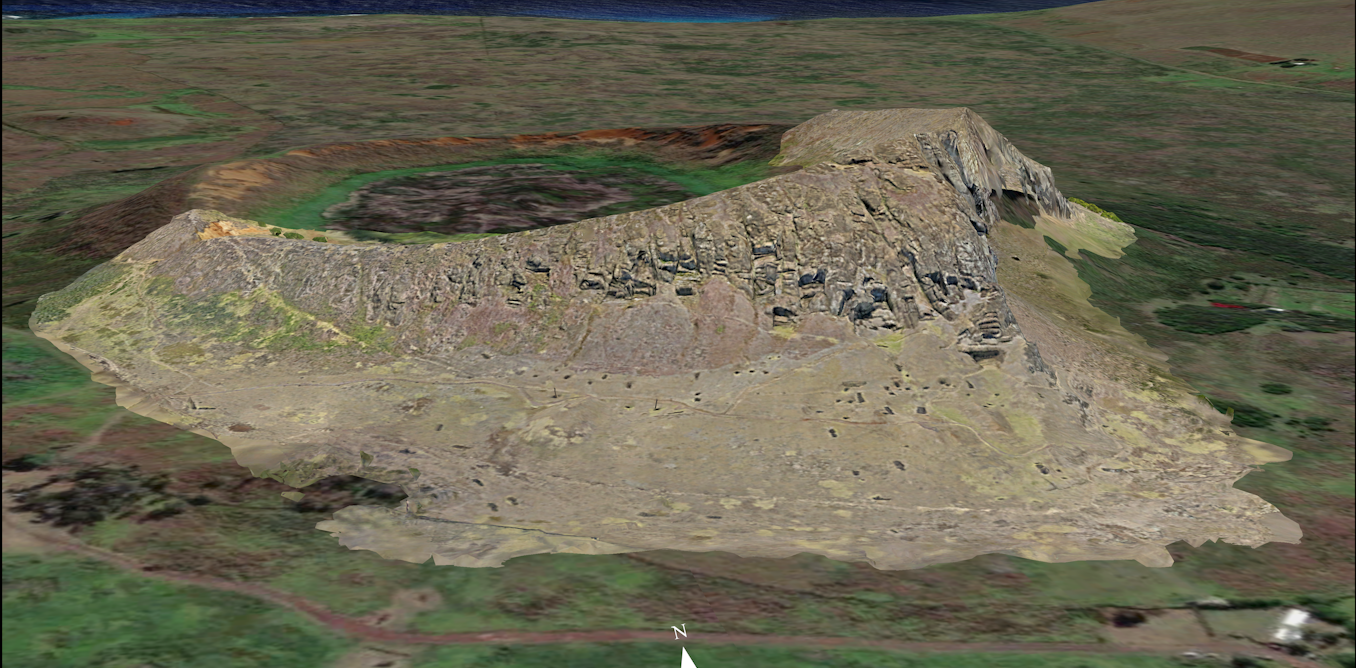While expanding nuclear energy production would provide carbon-free power and can help countries around the world meet their climate goals, nuclear energy could also come with some inherent risk. Radioactive pollution damages the environment, and it’s nearly impossible to detect without specialized equipment. But what if plants growing in the facility’s surrounding area could detect radiation pollution?
The mechanical radiation detectors currently used, called dosimeters, aren’t completely reliable – during previous nuclear accidents such as Chernobyl, they’ve failed or been buried under rubble.
Our team of plant scientists at the University of Tennessee wanted to figure out alternatives to these mechanical radiation sensors to help address their historic failures, so we decided to build a plant-based sensor for gamma radiation. The sensor, called a phytosensor, is a potato plant that glows fluorescent green when exposed to radiation.
Historic sensor problems
Current nuclear energy production is considered safe by the World Nuclear Association. But safety failures still happen, whether from human error or natural disasters such as earthquakes bringing the mechanical sensors offline – and that’s where our plant sensors could come in.
AP Photo/Volodymyr Repik
Mechanical radiation detection equipment needs electrical power and regular maintenance, both of which make them less reliable during emergencies. A plant-based sensor wouldn’t require either of these.
The kinds of disasters that take mechanical sensors offline might damage the potato sensors but most likely wouldn’t kill an entire planted field of potatoes. As long as some plant cells are still alive, the plant could function as a radiation sensor.
Though potato plants are tough, some disasters, like a wildfire, would damage plant sensors more than mechanical sensors. While our sensors could supplement mechanical sensors, they wouldn’t completely replace their use.
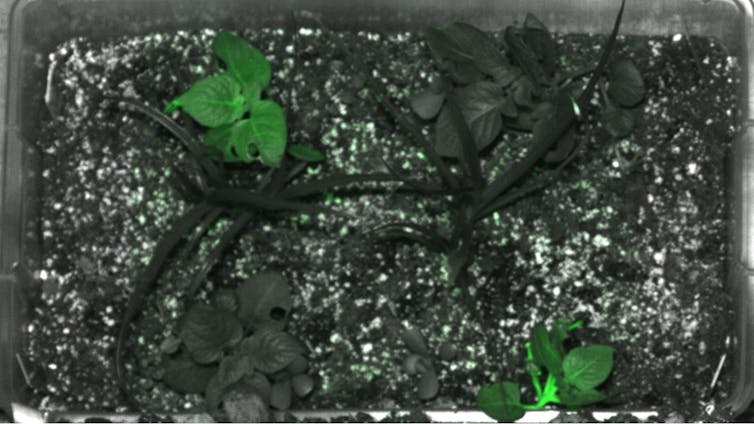
Stewart lab
Plants as sensors
Unlike mammals, plants can tolerate a lot of radiation before they die.
Potato plants, for example, can survive 10 times the amount of radiation that would kill a human.
We chose potato as our sensor organism because potato plants can tolerate high levels of radiation, they’re easy to grow using tubers and they can survive in a variety of environments across the globe.
Radiation exposure damages DNA inside an organism’s cells. When this happens in plants, they enter a “red alert” scenario and activate many DNA repair genes to fix the problem.
My colleagues and I co-opted the DNA damage response pathway in potato plants so that when exposed to radiation, the potato leaves made a green fluorescent protein. This fluorescent protein causes the sensor plants to emit a unique green fluorescent glow when exposed to gamma radiation.
While the human eye can’t see the green signature, drones used for agricultural and environmental monitoring can. The more green fluorescence produced by the plant, the higher the radiation intensity. So the sensors can tell you “yes, there’s radiation,” as well as roughly how much radiation there is.
In our tests, the plants reported radiation eight hours after exposure, but that was also the earliest our team was able to check them.
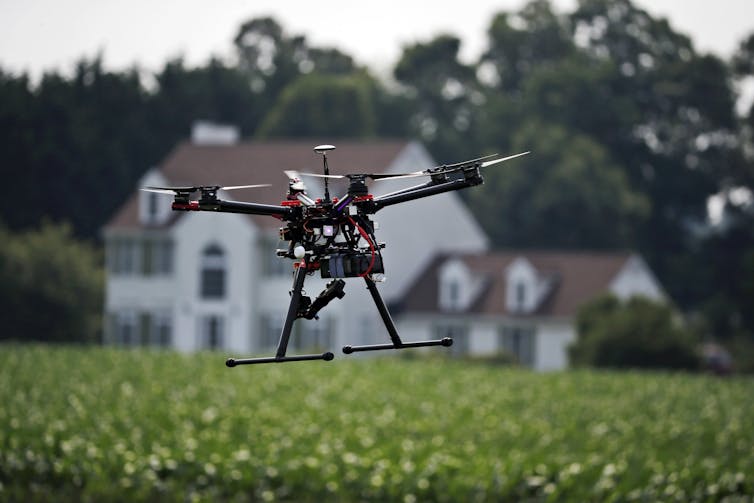
AP Photo/Alex Brandon
Based on our testing, the current radiation phytosensor can report a minimum total dose of 10 gray of radiation – a very lethal dose for a human. The sensors reported radiation eight hours after exposure to it, and they continued to do so for 10 or more days, depending on dose.
Mechanical sensors can detect far lower radiation levels in real time, rather than as a cumulative dose like the phytosensors detect. This makes mechanical sensors ideal for everyday monitoring of dangerous radiation within a power plant, while phytosensors are better suited to monitor the larger areas of land around a power plant.
The current sensor could monitor radiation levels for the general public in an emergency scenario where radioactive material could be anywhere within a large disaster area. Chernobyl contaminated an area about the size of Nebraska, while Fukushima contaminated an area about the size of New Jersey. Most of this area had low-level contamination, with some hot spots.
Compared with mechanical sensors, phytosensors are slower and less sensitive, so they wouldn’t save anyone working inside the power plant, even if they were grown indoors. The current sensor could tell first responders where the hottest areas are during a large-scale disaster. After a disaster, it could inform regulators where it is safe for workers, and eventually the public, to return to.
We tested the sensor using an in-lab laser and camera, which are low-power and low-resolution devices. Actual drones with specialized detection systems would likely be able to detect lower radiation thresholds.
In addition to functioning similarly to mechanical radiation sensors, the potato-based radiation phytosensor is a living and growing organism that gets its energy from sunlight. This means that the phytosensor is self-repairing, self-propagating and self-powering, unlike mechanical sensors. Since potatoes grow from tubers, they don’t need to be replanted every year.
One obvious downside of the current sensor is that potato plants die in the winter, so during that season you’d lose the sensor. Our sensor gene potentially could be put into an evergreen species like a pine tree, but this sensor would need to be retested to understand its detection minimums and performance over time.
Potential applications
When used in combination with more sensitive mechanical sensors, the current radiation phytosensor could act as a fail-safe if a disaster similar to Fukushima Daiichi were to occur.
While there are many possibilities for incorporating phytosensors into our current monitoring systems, our team still has hurdles to cross before the plants can be deployed in the field.
First, nuclear regulators would have to determine whether this technology is safe and useful, given their expectations for radiation monitoring equipment. Then, the plant sensor would undergo rigorous evaluation by the USDA to determine whether the phytosensors would negatively affect ecosystems if released.
Overcoming these hurdles will require more research, which could take months given the growth time for plants. Despite the work ahead, radiation phytosensors could help protect people and the environment in the future as countries continue producing nuclear energy.
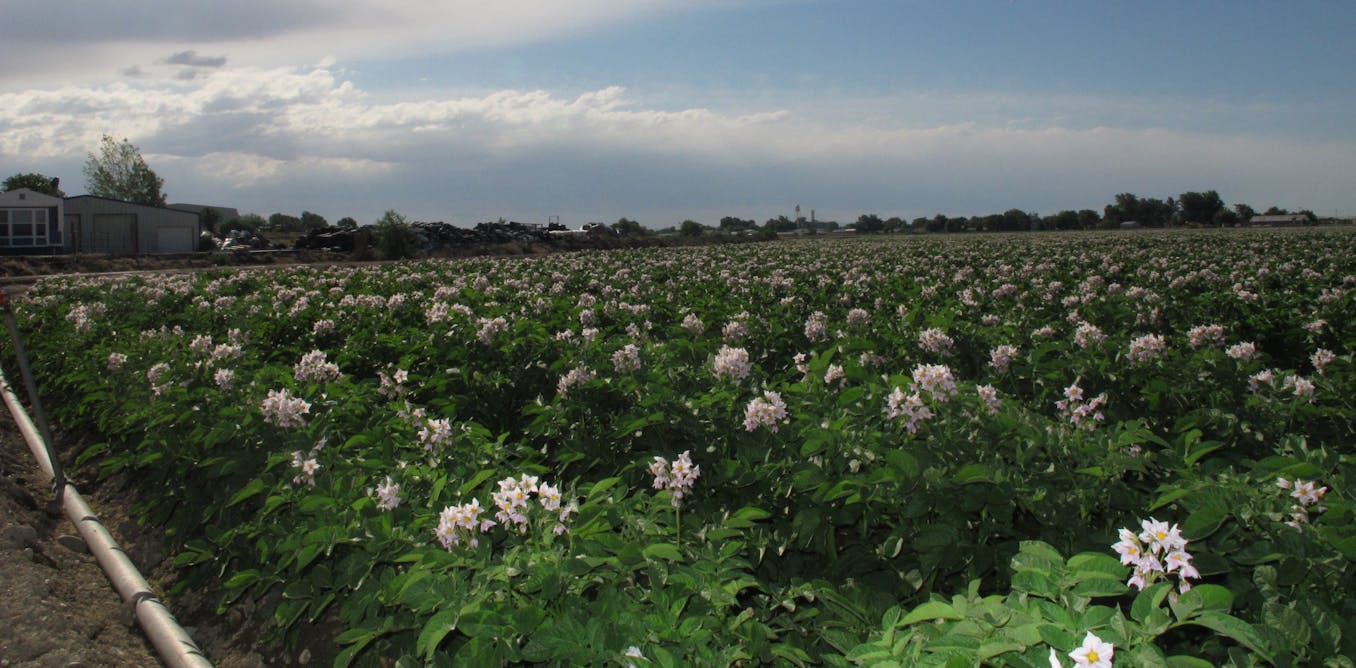
The post “Potato plant radiation sensors could one day monitor radiation in areas surrounding power plants” by Robert Sears, Graduate Research Assistant in Plant Science, University of Tennessee was published on 02/21/2024 by theconversation.com












